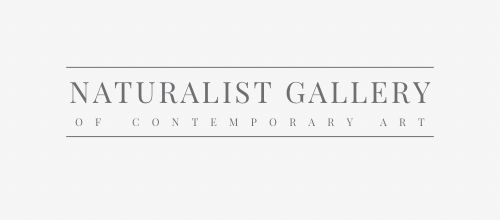Featured image: The Garden of Earthly Delights (detail) (1490-1510) Hieronymus Bosch
Paintings often hold more than what meets the eye. Artists throughout history have embedded secret symbols and hidden messages within their works, adding layers of meaning that intrigue and captivate viewers. Here are hidden symbols in some of the most iconic paintings, revealing the deeper narratives and mysteries that lie beneath their surfaces.
Explore our curated selection of contemporary artists from around the globe.
Naturalist Gallery offers artist representation internationally. Apply your art.
The Garden of Earthly Delights (detail) (1490-1510) Hieronymus Bosch
Hieronymus Bosch’s The Garden of Earthly Delights (1490-1510) Hieronymus Bosch’s triptych, "The Garden of Earthly Delights," is a rich tapestry of symbolic elements. The left panel, depicting the Garden of Eden, is filled with idyllic and innocent imagery, while the central panel shows a utopian paradise teeming with exotic creatures and fruits. The right panel starkly contrasts with its hellish landscape, filled with nightmarish creatures and dark tones, symbolizing the perils of a decadent existence.

The Creation of Adam (detail) (1508-1512) Michelangelo Buonarroti compared with a human brain
Michelangelo Buonarroti’s The Creation of Adam (1508-1512) Michelangelo’s fresco, "The Creation of Adam," on the ceiling of the Sistine Chapel, is renowned not only for its artistry but also for its hidden anatomical symbols. The shape of God’s cloak in the fresco closely resembles the human brain, symbolizing the divine spark of intellect bestowed upon humanity. This detail highlights Michelangelo’s fascination with the human form and his subtle critique of the Church’s stance on scientific knowledge.
Café Terrace at Night (detail) (1888) Vincent van Gogh compared with The Last Supper (1495-1498) Leonardo da Vinci
Vincent van Gogh’s Café Terrace at Night (1888) Van Gogh’s "Café Terrace at Night" is believed to depict the Last Supper subtly. The arrangement of figures, with a central long-haired figure surrounded by twelve others, mirrors the composition of the Last Supper. Additionally, crosses hidden in the painting reinforce this theory. Van Gogh’s use of vibrant colors and his unique perspective adds a layer of depth to this interpretation, revealing his deep connection to religious themes.
The hidden symbols in these famous paintings add layers of complexity and intrigue, inviting viewers to explore the deeper meanings behind the art. By uncovering these secrets, we gain a richer understanding of the artists' intentions and the cultural contexts in which they created their masterpieces. Whether it's Bosch’s moral allegories, Michelangelo’s anatomical references, or Van Gogh’s subtle religious symbolism, these hidden messages enhance our appreciation of these iconic works.
Learn more About Naturalist Gallery of Contemporary Art.
The Garden of Earthly Delights (detail) (1490-1510) Hieronymus Bosch
You may also find the following articles helpful:
The 14 Essential Artists of Impressionism
Expressionism: 20 Iconic Paintings & Their Artists
Renaissance Art: Origins, Influences, and Key Figures
Classical Art Movement: Exploring the History, Artists, and Artworks
Figurative Art: Understanding, Collecting, and Appreciating the Style
Daily Routines of Famous Artists: Learn from the Masters
Top 12 Controversial Artworks That Changed Art History




